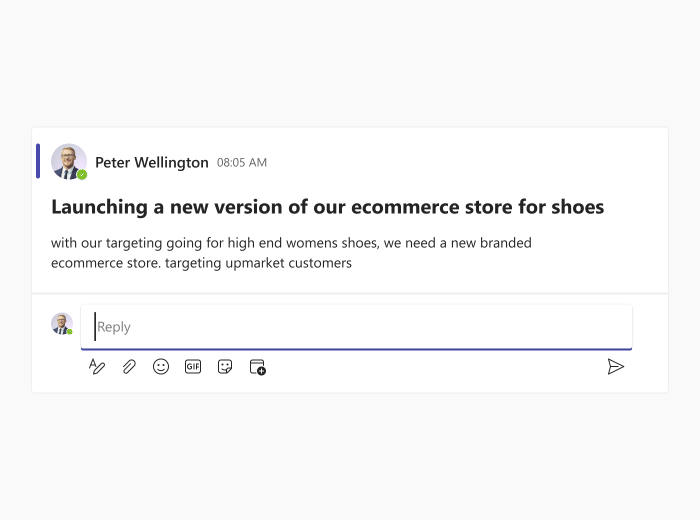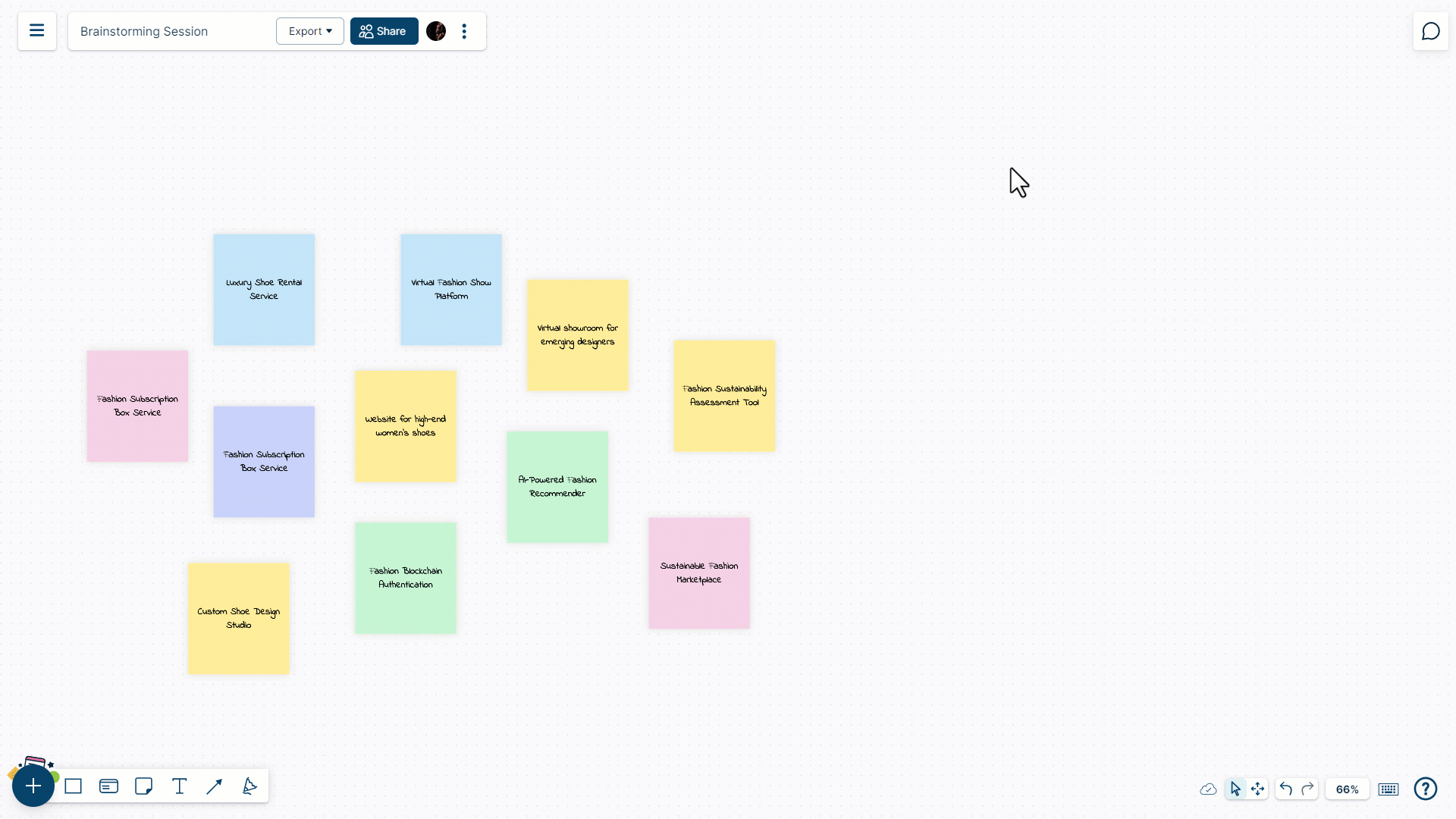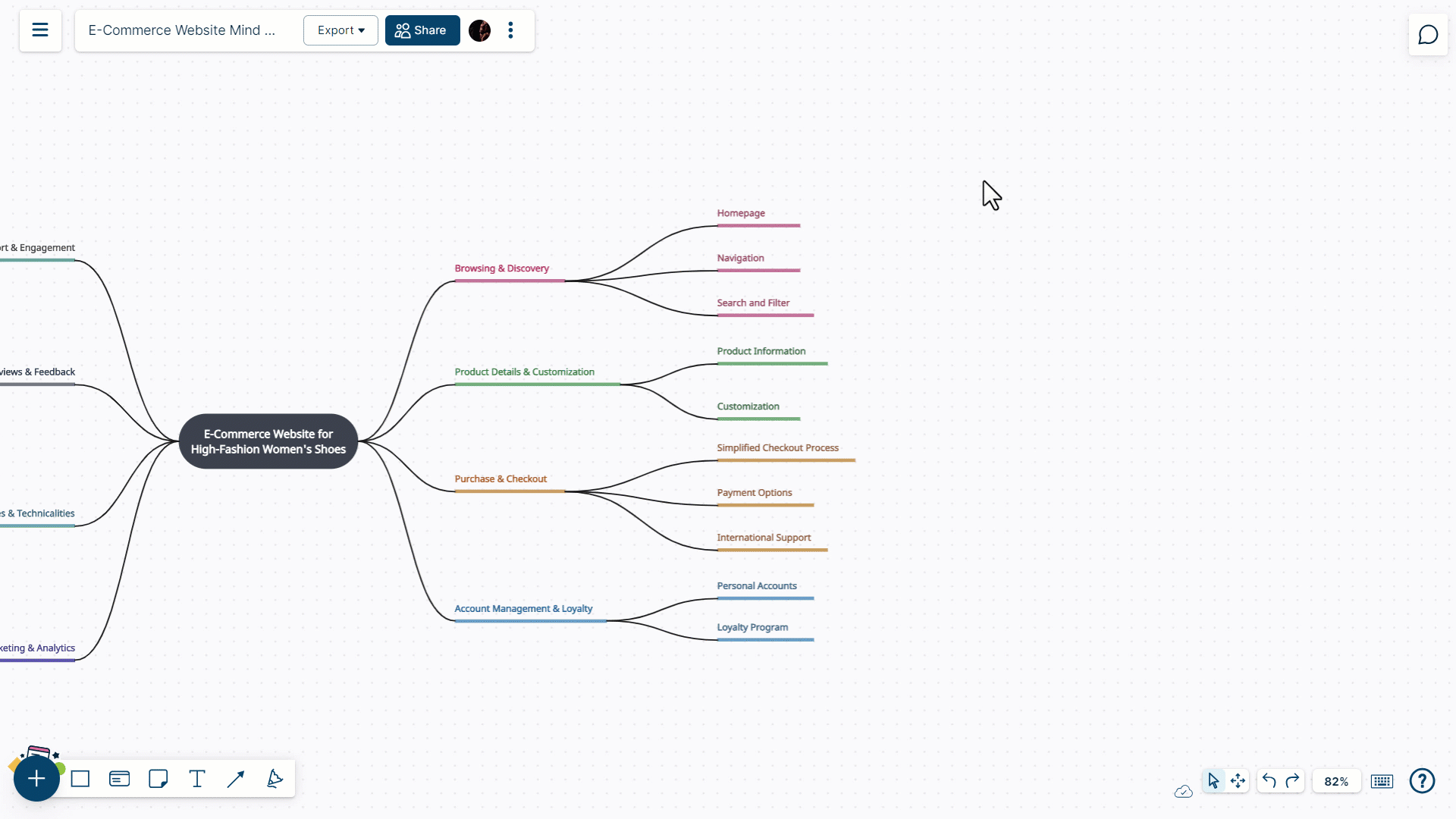Artificial intelligence has completely changed the way people work and think, and as a result it has revolutionized how ideas are born. AI brainstorming has not only accelerated the idea generation process, but it has also increased human creativity and their collaborative efforts and the quality of output. In this guide, we will explore how AI brainstorming works and how you can leverage it in your work to boost creative thinking and drive innovation.
What is AI Brainstorming
AI brainstorming refers to the use of artificial intelligence (AI) technologies to improve the process of generating creative ideas and solutions. While traditional brainstorming involves a group of individuals coming together to think creatively and generate multiple ideas on a particular topic or problem, AI can be integrated into this process to provide additional insights, suggestions, and creativity.
Here’s how AI is typically involved in the brainstorming process:
1. Data input
Users input a prompt, question, or context into the AI system. This serves as the starting point for generating ideas.
2. AI Model processing
The AI system, often powered by machine learning algorithms or natural language processing (NLP) models, processes the input and analyzes patterns and relationships within the data it has been trained on.
3. Idea Generation
Based on its analysis, the AI system generates creative suggestions, ideas, or solutions related to the input prompt. The output can vary from text-based responses to more complex suggestions.
4. Collaboration with humans
The generated ideas are presented to users who can evaluate, refine, and build upon them. The best ideas are selected based on human judgment and creativity.
5. Iteration and refinement
You may need to go through multiple iterations, tweak the input prompts, and generate more ideas until you get the right set of ideas.
It’s important to note that AI can speed up idea generation and provide new insights, but it’s not meant to replace creativity. AI and humans need to work together to brainstorm effectively, because human judgment, context understanding, and ethical considerations all play crucial roles in refining and implementing ideas.
How to Use Creately VIZ to Run an AI-Powered Brainstorming Session
Creately VIZ is Creately’s AI-based visualization and diagramming technology that helps users generate diagrams or visuals automatically based on prompts and custom input.
With Creately VIZ, users can;
Generate different types of diagrams automatically based on text prompts.
Expand your diagrams in a snap whether you want to generate similar items, counter points, or by using custom instructions.
Convert ideas into multiple types of diagrams and visual frameworks (eg: convert a mind map to a Kanban board).
Organize and categorizing elements in a diagram to identify patterns, trends, and relationships
Get a head start with multiple AI templates for mind maps, business model canvases, etc.
Follow the steps below to streamline your AI brainstorming with Creately VIZ;
1. Familiarize yourself with Creately VIZ
Explore the features of Creately VIZ and make sure you understand how to use it to generate or expand your visuals. To learn more about how to use Creately VIZ, refer to this article.
2. Create a workspace and define objectives
Create a workspace and add collaborators who you want to work with. Clearly define the objectives of your brainstorming session. What specific problems or challenges do you aim to address? What type of ideas are you seeking? Write it on a sticky note on the workspace for everyone to see.
You can also embed relevant information about the brainstorming topic in the canvas for the participant to refer to during the session. This could include market trends, user feedback, or any data that might inspire creative thinking.
3. Start with a template or start from scratch
Creately offers a range of AI templates which varies from brainstorming frameworks such as mind maps to reverse brainstorming for you to start with. You can use one of these to begin your brainstorming session, and later use the prompts in the contextual toolbar to expand or fill the diagram further. Or you can start with a simple shape that you drag and drop from the shapes panel and use custom prompts to build on your ideas.

4. Facilitate discussion
Use comments to add comment on visuals, make annotations, or propose modifications in real-time.
Alternatively, you can also use Microsoft Teams to host your brainstorming session and use the Creately Viz for Microsoft Teams plugin to turn what’s discussed into easy-to-understand visuals.
- One-command visuals: Simply say “@creately generate me type of visual for context or scenario”.
- It can understand your conversation context: With simply saying “@creately generate me a Kanban board from this thread”, Creately will automatically identify key action points, and convert it into a real Kanban board that you can open right within Teams.
- Update existing workspaces: You can also say “@creately update our pinned workspace with this action item” or “@creately update the brainstorming board with this idea” etc. This only works when you have pinned workspaces in the channel and it works really well as a place to put ideas that otherwise get lost in discussions.

5. Evaluate and select ideas
Once you have captured all ideas, you can use Creately VIZ to group them by theme , sentiment, or listed tags which you can use to set criteria to prioritize them.

6. Create actionable plans
Select the prioritized ideas and use Creately VIZ to create a Kanban board detailing the implementation steps out of them.

AI Brainstorming Templates
Get a headstart on your brainstorming session with the following AI brainstorming templates from Creately VIZ.
Mind map
Idea board
Reverse brainstorming template
Affinity diagram
5 Whys template
2X2 prioritization matrix
Creative brainstorming template
Prompts for Better Brainstorming with AI
Tips for Writing Effective Prompts for Brainstorming AI
Prompts for creative brainstorming must be clear and stimulating in order to encourage participants to think freely and come up with innovative ideas. Here are some tips on how to create prompts for creative brainstorming:
Clear objective: Clearly define the brainstorming session’s goal or topic. This gives the AI model the context for responding in a relevant and creative way.
Use descriptive language: Incorporate vivid and descriptive language to set the tone and stimulate creative thinking. Paint a picture of the desired outcome.
Open-ended questions: Frame questions in a way that encourages open-ended responses. Avoid yes/no questions to allow for a broader range of creative ideas.
Specify format: Indicate the desired format for responses. For example, you might request the AI to generate a story, suggest solutions, or provide insights.
Consider context: Give the AI model relevant background or context to help it understand and respond more appropriately.
Incorporate constraints: If desired, introduce constraints or specific requirements to guide the AI’s creative output. It can add an interesting challenge to brainstorming.
Variety in prompts: Play around with different prompts, like scenario-based questions, creative challenges, or requests for innovative solutions.
Iterative prompts: You can build on the AI’s initial response with a series of prompts. With this iterative approach, you can come up with more detailed ideas.
AI Prompt Examples for Brainstorming
Alternative uses - “Think of five alternative uses for a paperclip.”
Problem-solving - “Generate innovative solutions for problem A. How can we address challenges in a way that’s both effective and user-friendly?”
Future trends - “Explore emerging trends in technology, lifestyle, or business. How can we capitalize on these trends to inspire and drive innovation in our products or services?”
Unmet needs - “Brainstorm ideas for identifying and addressing unmet needs or underserved markets. How can we develop products or services that cater to these specific gaps in the market?”
Improving processes - “Generate ideas for improving existing processes or workflows. How can we make them more efficient, cost-effective, or user-friendly using innovative approaches?” Cross-Industry Collaboration - “Imagine the possibilities of cross-industry collaboration. Generate ideas that involve bringing together concepts from different industries to create innovative solutions.”
Human-centric design - “Explore human-centric design principles. How can we design products or services with a strong focus on improving the user experience and meeting the needs of the end-user?”
Inspiration from nature - “Generate ideas inspired by nature. How can we draw from observations of natural systems to develop innovative solutions or design principles?”
Unexpected combinations - “Explore unexpected combinations of concepts, industries, or ideas. How can these combinations lead to unique and innovative outcomes in product or service development?”
Optimizing resources - “Brainstorm ideas for optimizing the use of resources—whether it’s time, energy, or materials—in our products or services to make them more sustainable and efficient.”
Cross-industry collaboration - “Imagine the possibilities of cross-industry collaboration. Generate ideas that involve bringing together concepts from different industries to create innovative solutions.”
Benefits of AI Brainstorming
Brainstorming AI can change the way we think creatively. It makes the process faster, brings in different ideas, and works well with human creativity. Some of the benefits of AI brainstorming includes;
- More ideas and different perspectives: AI can quickly come up with many different ideas, providing a variety of viewpoints that humans might miss.
- Faster idea generation: AI works fast, speeding up the process of thinking up new ideas. This is handy when time is a crucial factor.
- Helps human creativity: AI supports human creativity rather than replacing it. It can offer suggestions, sparking new ideas and inspiring innovative thinking.
- Access to insights from big data: With AI, you can dig through tons of databases and analyze big datasets to get useful insights. Big data can inspire brainstorming and provide a wealth of information.
- Finds solutions faster: AI can swiftly explore different solutions, saving time and helping teams focus on the best ideas.
- Supports idea prioritization: AI can help teams evaluate and prioritize ideas, so they can focus on the most practical ones.
Remember, the effectiveness of AI-powered brainstorming depends on the quality of input prompts and the refinement process. Even though AI can speed up idea generation, human creativity and judgment remain essential. Don’t forget to consider ethical considerations and biases when you use AI tools for creativity.






